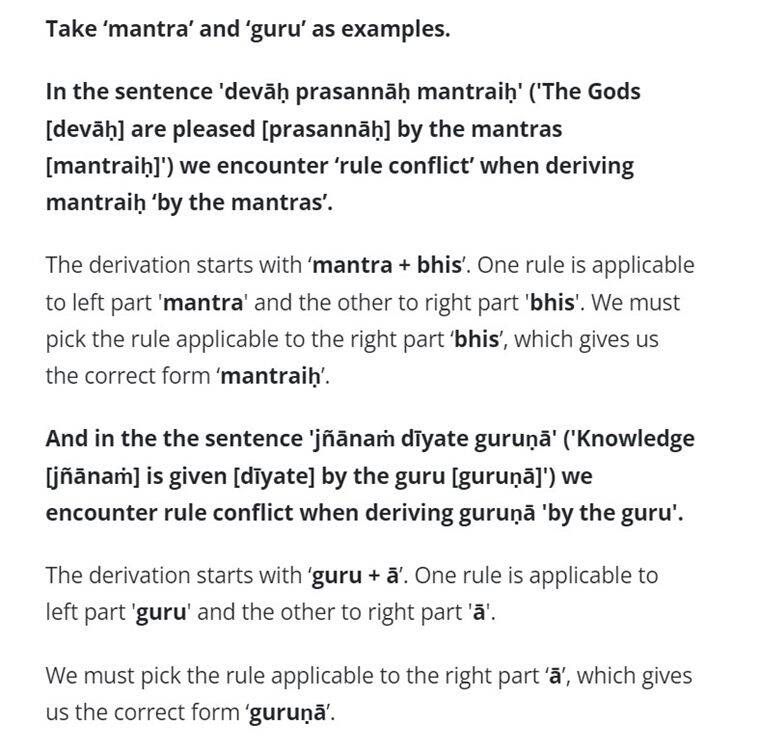Important Facts For Prelims
Panini’s Ashtadhyayi & Grammar’s Greatest Puzzle
- 21 Jan 2023
- 5 min read
Why in News?
Recently, a Cambridge scholar Dr Rishi Rajpopat’s has claimed to have solved Sanskrit’s biggest puzzle—a grammar problem found in the ‘Ashtadhyayi’.
What is Ashtadhyayi?
- Written more than 2,000 years ago, Ashtadhyayi or ‘Eight Chapters', is an ancient text written by the scholar Panini towards the end of the 4th century BC.
- It is a linguistic text that set the standard for how Sanskrit was meant to be written and spoken.
- It delves deep into the language’s phonetics, syntax and grammar, and also offers a ‘language machine’, where one can feed in the root and suffix of any Sanskrit word, and get grammatically correct words and sentences in return.
- The Ashtadhyayi laid down more than 4,000 grammatical rules.
- Later Indian grammars such as the Mahabhasya of Patanjali (2nd century BC) and the Kasika Vritti of Jayaditya and Vamana (7th century AD), were mostly commentaries on Panini.
What was the Puzzle?
- Confusing Rules:
- In Ashtadhyayi, there were two or more of the rules of Grammar that could apply at the same time, causing confusion.
- To resolve this, Panini had provided a ‘meta-rule’ (a rule governing rules), which had historically been interpreted as- In the event of a conflict between two rules of equal strength, the rule that comes later in the serial order of the ‘Ashtadhyayi’ wins.
- However, it kept producing exceptions, for which scholars had to keep writing additional rules. This is where Dr Rishi Rajpopat’s discovery came through.
- Solution:
- The Scholar took a simpler approach, arguing that the meta-rule has been wrongly interpreted throughout history; what Panini actually meant was that for rules applying to the left and right sides of a word, readers should use the right-hand side rule.
- Using this logic, Dr Rajpopat found that the ‘Ashtadhyayi’ could finally become an accurate ‘language machine’, producing grammatically sound words and sentences almost every time.
- Significance:
- The discovery now makes it possible to construct millions of Sanskrit words using Panini’s system—and since his grammar rules were exact and formulaic, they can act as a Sanskrit language algorithm that can be taught to computers.
Who was Panini, the Father of Linguistics?
- Panini probably lived in the 4th century BC, the age of the conquests of Alexander and the founding of the Mauryan Empire, even though he has also been dated to the 6th century BC, the age of The Buddha and Mahavira.
- He likely lived in Salatura (Gandhara), which today would lie in north-west Pakistan, and was probably associated with the great university at Taksasila, which also produced Kautilya and Charaka, the ancient Indian masters of statecraft and medicine respectively.
- By the time Panini’s great grammar, the ‘Ashtadhyayi’ was composed, Sanskrit had virtually reached its classical form — and developed little thereafter.
- Panini’s grammar, which built on the work of many earlier grammarians, effectively stabilised the Sanskrit language.
- The earlier works had recognised the root as the basic element of a word, and had classified some 2,000 monosyllabic roots which, with the addition of prefixes, suffixes and inflexions, were thought to provide all the words of the language.







